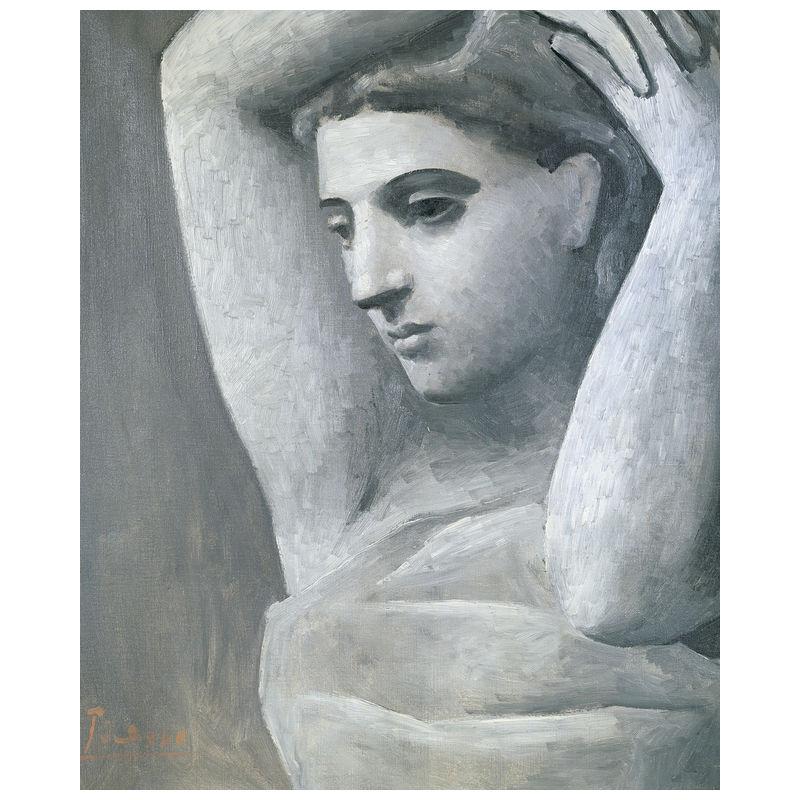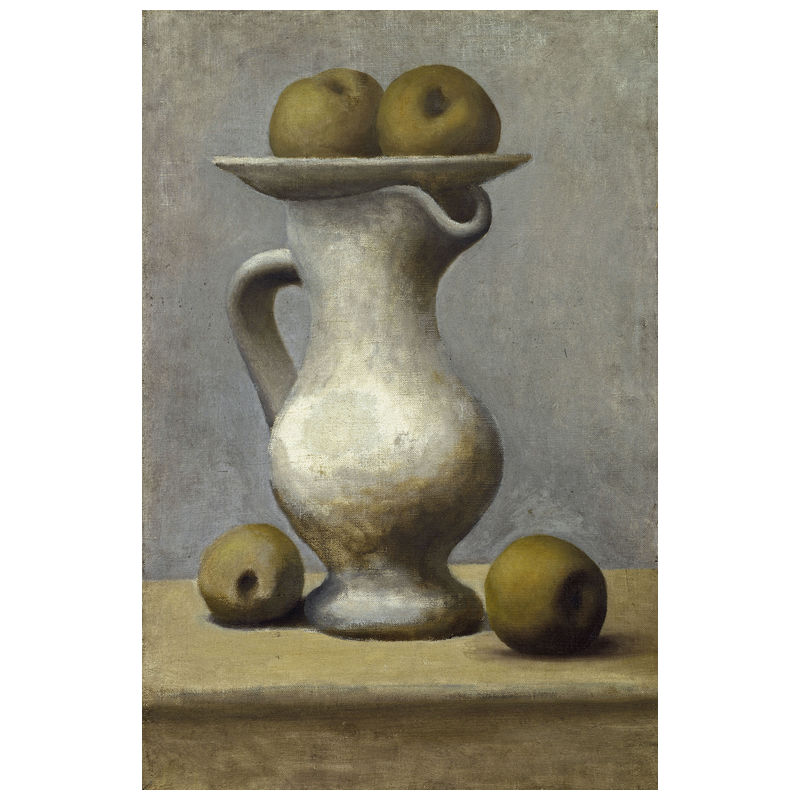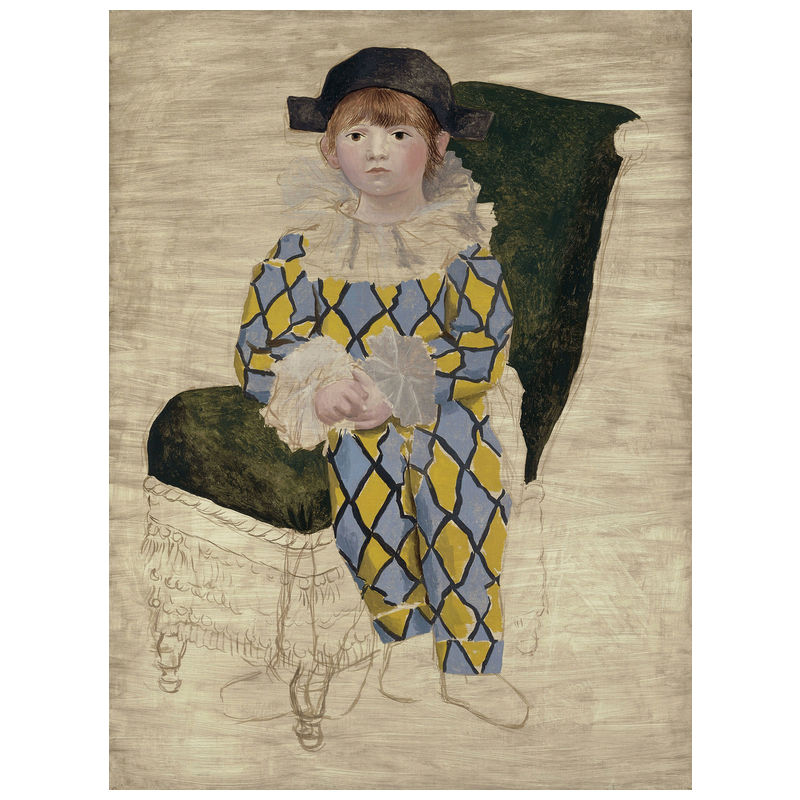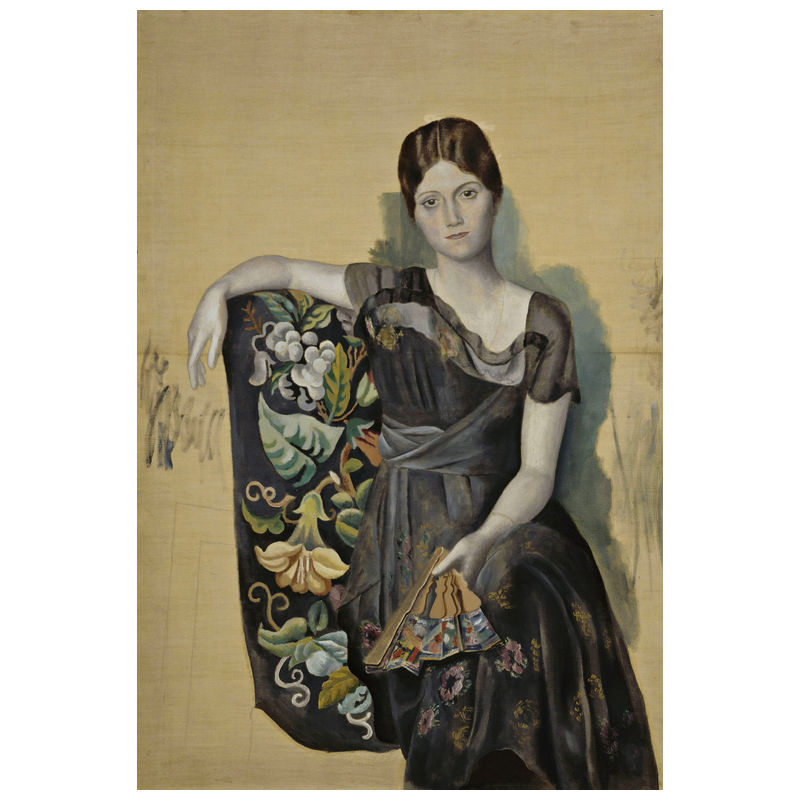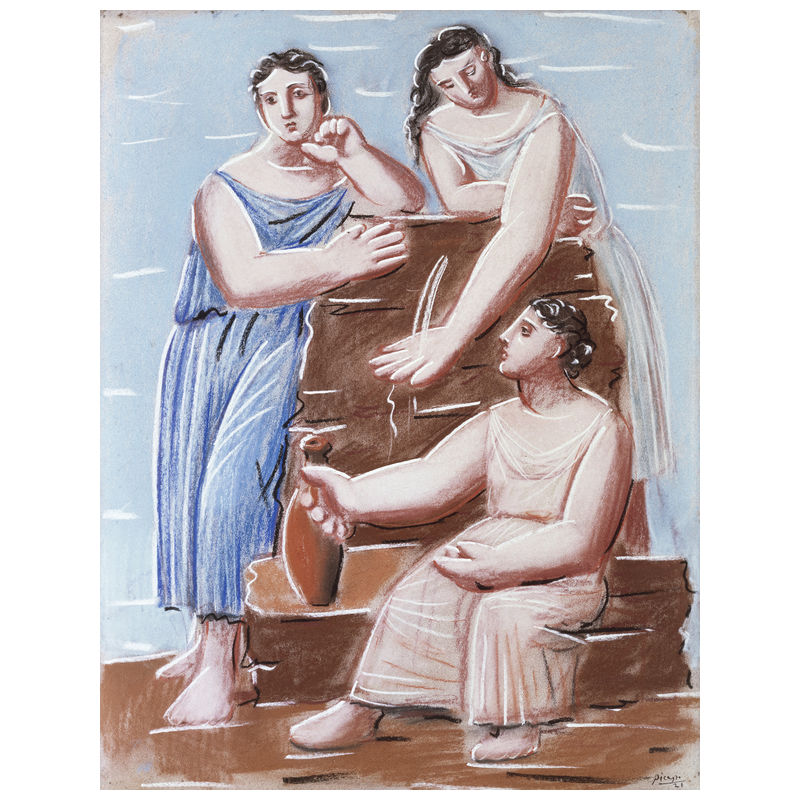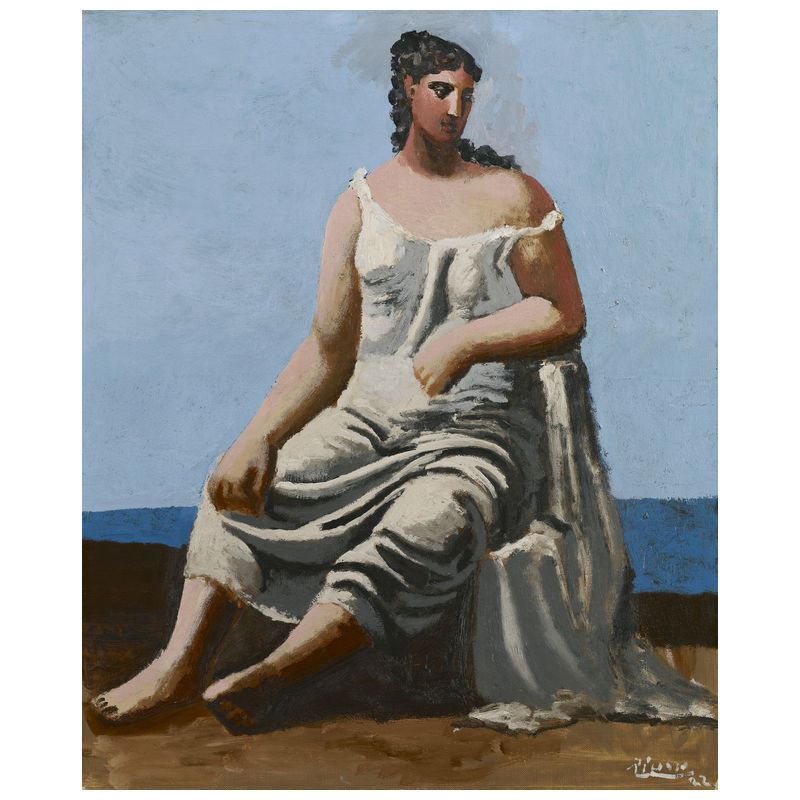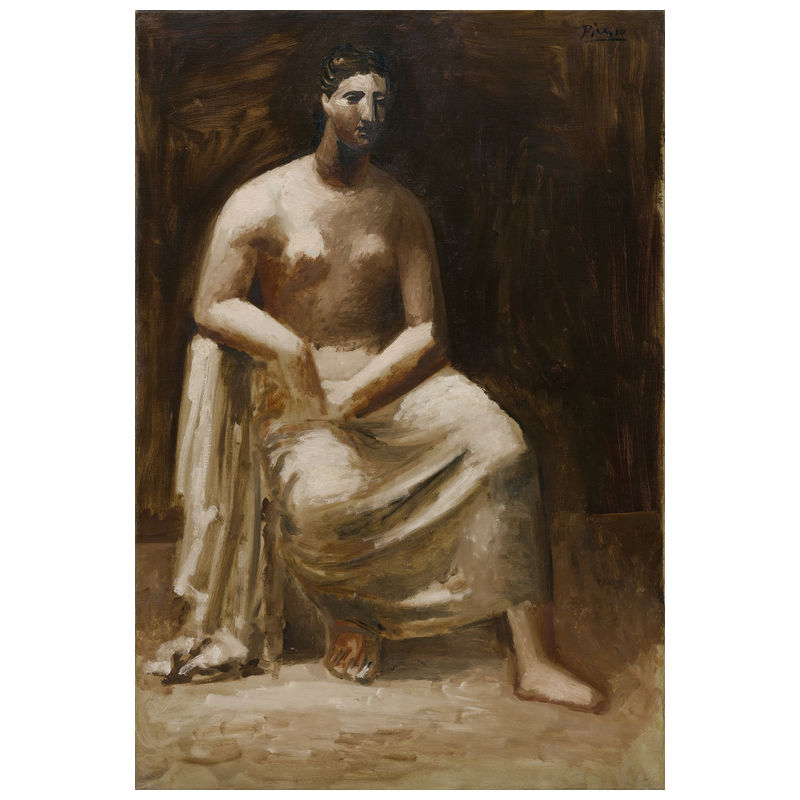Neoclassicism Period
In February 1917, Picasso made his first trip to Italy, resulting in his work shifting to a neoclassical style. Many artists of the 1920’s reverted back to classicism, instilling a “return to order” within the art world. Picasso’s paintings and drawings from this period frequently recall the work of Raphael and Ingres; his figures often displayed in Classical dress, their bodies fuller and Renaissance-like. A typical example of this Neoclassicism style is Two Women Running on the Beach, Large Bather and Two Nudes.[read more=”Read more” less=”Read less”]
Additionally, during the 1920s, influenced by the writings of psychologist Sigmund Freud, a literary, intellectual, and artistic movement called Surrealism sought a revolution against the constraints of the rational mind. By extension, they saw the rules of a society as oppressive. Picasso did not join the Surrealists; instead, they joined him. Surrealist writer and poet, André Breton, called Picasso “one of ours” in the fourth issue of Révolution surréaliste in 1925. In the same year, Picasso exhibited his Cubist works at the first Surrealist group show.
The Surrealists refuted rationality, technology, and all the other components of the parental generation that led to the horror of world war, placing their faith instead in the alternate reality of chance, desire, coincidence, and dreams. The goal was to create art as “beautiful as the chance encounter, on an operating table, of a sewing machine and an umbrella.” However, Picasso himself never fully embraced these ideals, let alone the most characteristic technique of Surrealism: “psychic automatism in its pure state,” as the first Surrealist manifesto put it; letting the pencil or paintbrush wander over the paper without exerting conscious control so that the image is formed without giving the action thought. Picasso was influenced by the interest that the Surrealists took in the unconscious as the mind’s “dark side:” filled with deep fears, inexpressible longings, and the most basic drives. Picasso had once thought of painting as a rigorous visual dissection of its subject, eventually shifting his mindset to Surrealism; the conception of painting served as an expression of his unconscious like a dream.
Essentially, Surrealism revived Picasso’s attraction to primitivism, eroticism, and violence. The eccentric rage and overall nature of these paintings was classified as the material of the unconscious; a spew of violence and eroticism that one can’t express in polite, bourgeois society. More prominently, it has been linked to Picasso’s frustration in his marriage to Olga Khokhlova.[/read]

